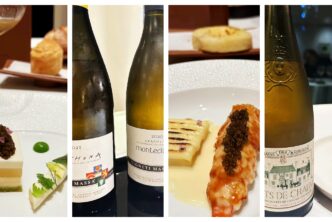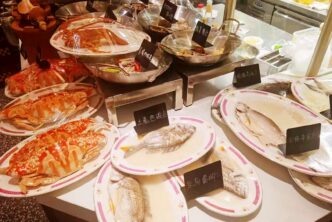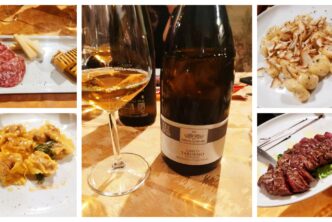L’Arbalète
50 Grand’Rue
68150 Ribeauvillé
Alsace, France
Tel. +33 3 89 73 82 92
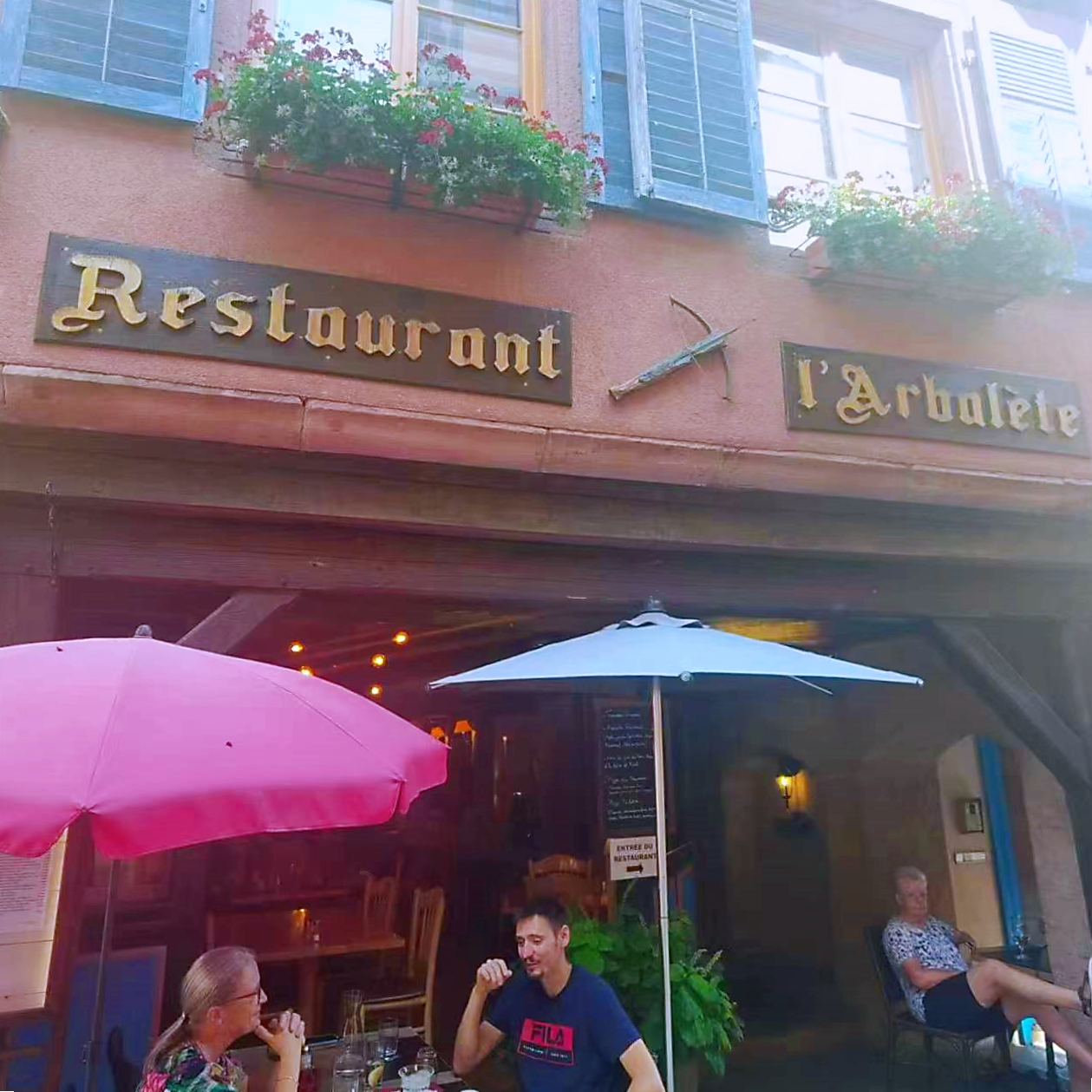
The dishes
Tarte Flambée Escargots
Tarte Flambée Gratinée
Tarte Pomme Cannelle Flambée au Calvados
The wines
Jean Sipp 2022 Muscat Réserve Alsace 91
Jean Sipp 2020 Pinot Gris Alsace 89
Metté Kirsch 90
Metté Vieille Mirabelle 90
Metté Marc de Gewurztraminer 90
Sometimes you want to feast and dine in a multi-starred temple of gastronomy, others just want to have a quiet lunch or dinner with friends somewhere. And then there are times when you have a super busy day and all your heart desires, needs really, is to stop off for a quick, uncomplicated bite, to eat perhaps simply but well, and to do so without getting harassed by over-anxious staff or noisy patrons. And on all counts, L’Arbalète in Ribeauvillé fits the bill nicely.
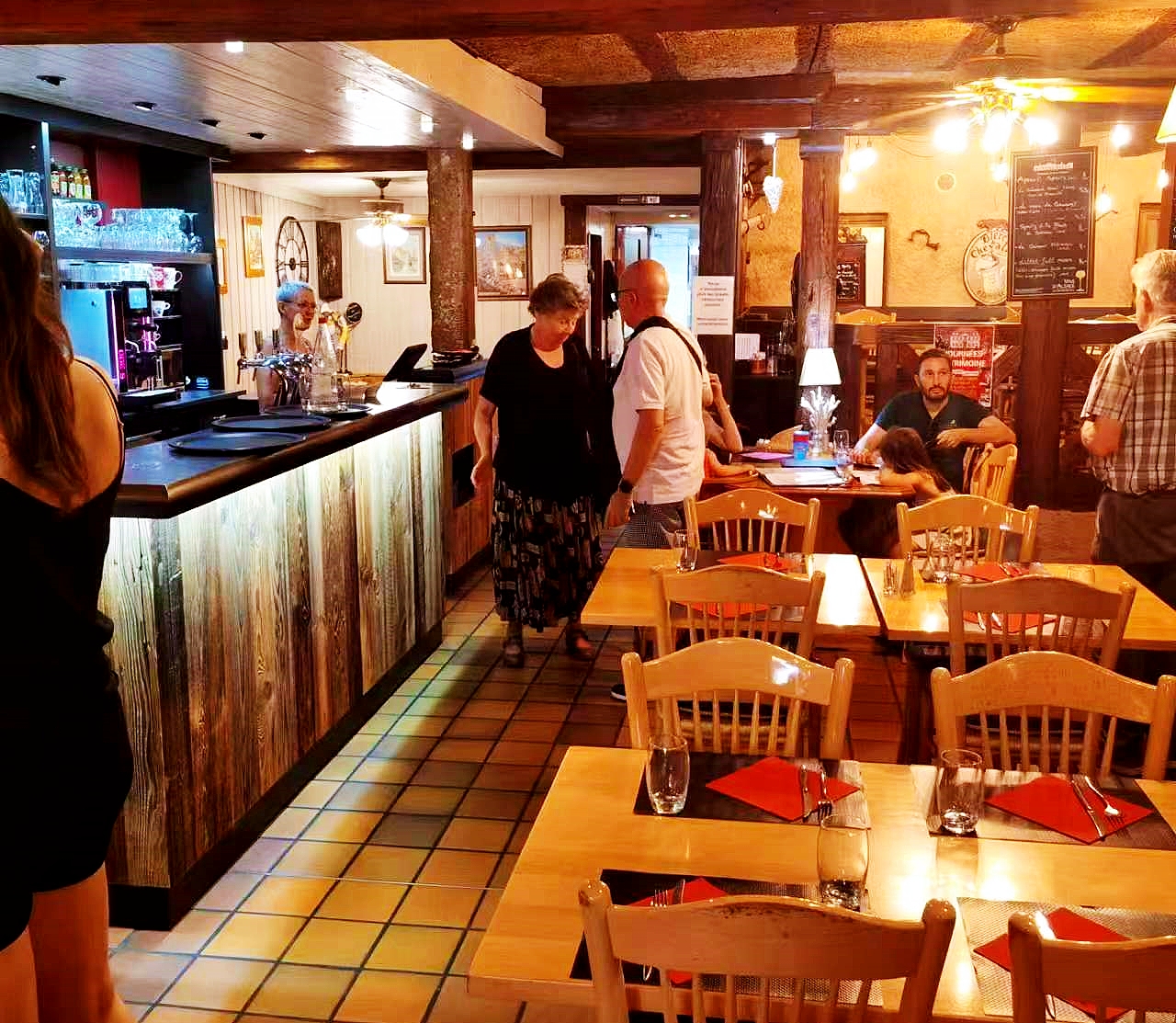
Comfortably situated on the pedestrian-only, bustling and pretty Grand’Rue, in the heart of of Ribeauvillé (one of Alsace’s most charming wine towns), the restaurant is nestled in a traditional, old Alsatian home oozing rustic country charm and authenticity. The dining space holds about eighty seats: the place can get pretty packed come evening, but at lunch the crowd is mostly quiet and intent on munching and drinking away in good company and normal conversation. Clearly, nobody will ever mistake this old wooden-beamed, slightly darkly-lit dining spot as a temple of worldly sybaritic delights people flock to from all over the world. But l’Arbalète doesn’t strive to be, or even need to be. What it does, it does well and efficiently, at a very low price that won’t have you thinking you just got suckered into paying for someone else’s summer vacation. When a place is “famous” for its pizzas and tarte flambées, you know what you are getting yourself into: the important thing is that these food creations be good. Now, I can’t vouch for the pizzas (I absolutely love Alsace and am surely the world’s biggest English-language wine writer fan of its wines, food, people and culture, but even I don’t love it that much to want to try or eat pizza there!) but the tarte flambées are just fine.
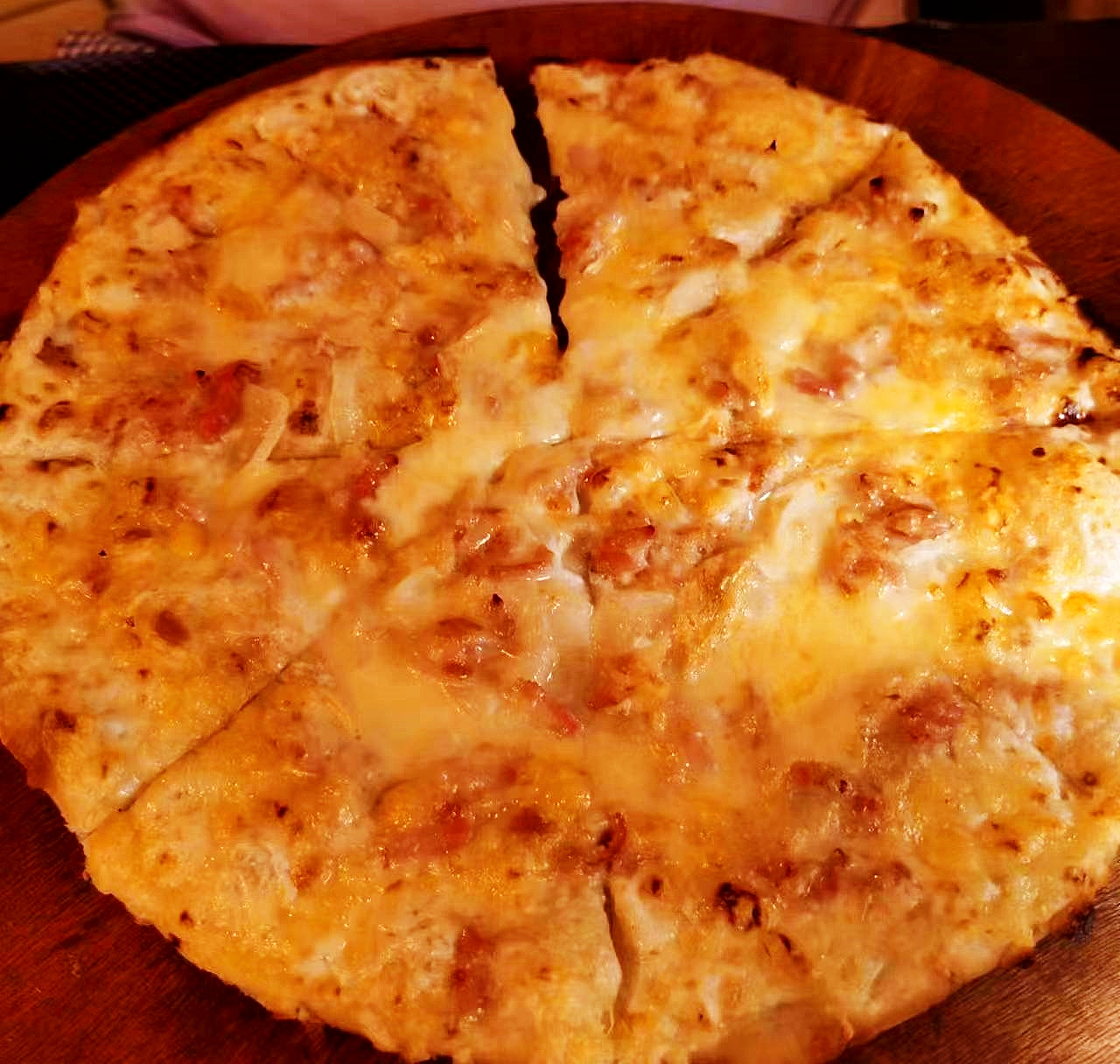
The tarte flambée is an Alsace classic, born on its many farms thanks to the bounty of agricultural and animal products this French region has always been blessed with. Also called flammekueche in the local Alsatian language, the exact origins of this dish as we know it today have been traced back to slightly more than one hundred years ago around Strasbourg, and especially in the Koshersberg region of Alsace (about a 15-20 minute car drive from Alsace’s capital). Back then, locals still engaged in the art of bread-making in their traditional stone-based floor, wood-burning ovens. (There is some debate about where this dish actually originated, with some teutonic-sympathizers maintaining it was first created by farmers of Germany’s Pfalz, only becoming “Alsatian” when Alsace became a permanent part of France.) The problem for every cook in those (happily?) less technological times was to know when the temperature in the oven had reached the degree required for baking the perfect bread loaf. So the ingenious chaps and ladies resorted to breaking off a piece of dough, flattening it out to a thin disc-like shape, and placing it in the oven: if it quickly became crisp and coloured, then the temperature was perfect to bake the much bigger, juicier, loaves without burning them. But at the same time, it dawned on the more intuitive of those doing the cooking that the crispy dough was pretty delicious on its own. And so, an Alsatian-styled pizza was born: and given they only baked bread about once a week, it allowed them to make tarte flambée the rest of the time. From there, the addition of bacon (lardons), onions and a little crème fraîche (or fromage blanc) was an easy step to take, and tarte flambée as we know it was born (though purists maintain that the original recipe also included a few drops of rapeseed oil). In fact, compared to modern tarte flambées, those older pies boasted another difference: given that the dough a century ago was commonly rolled out by hand, the true tarte flambée of yesteryear was characterized by a thicker crust than that of the often wafer-thin pies of today. But let’s not quibble. A number of variations on the original recipe have since become very popular and are available everywhere these pies are sold. Today’s best-known varieties are: forestière (with mushrooms); and gratinée (with gruyère cheese) or the Munster (with Alsace’s famous Munster cheese). Some of the most delicious tarte flambées of all are actually the sweet ones, with the versions doused with Calvados or loaded with caramelized apples and cinnamon (and in a wonderful the “more the merrier” mode of which I am totally supportive, with Calvados too) so delicious they are reason enough to drop everything you are doing right now and just go catch a plane to Alsace. Curiously, despite what its French name implies, this pie is not flambéed in a pan in the way most of us commonly associate the word “flambée” with, but as already mentioned, is cooked in an oven (“in die flammen”, or “in the flames”). An Alsatian staple, tarte flambée is also very common in Germany (where it is called flammkuchen), especially in the Pfalz, Baden and to a lesser extent the Moselle. Which is not so surprising, given that Alsace territory was long contested between France and Germany, falling under the rule of the two countries at different points throughout the centuries, and as mentioned some believe the dish to have originated in Germany, not France.
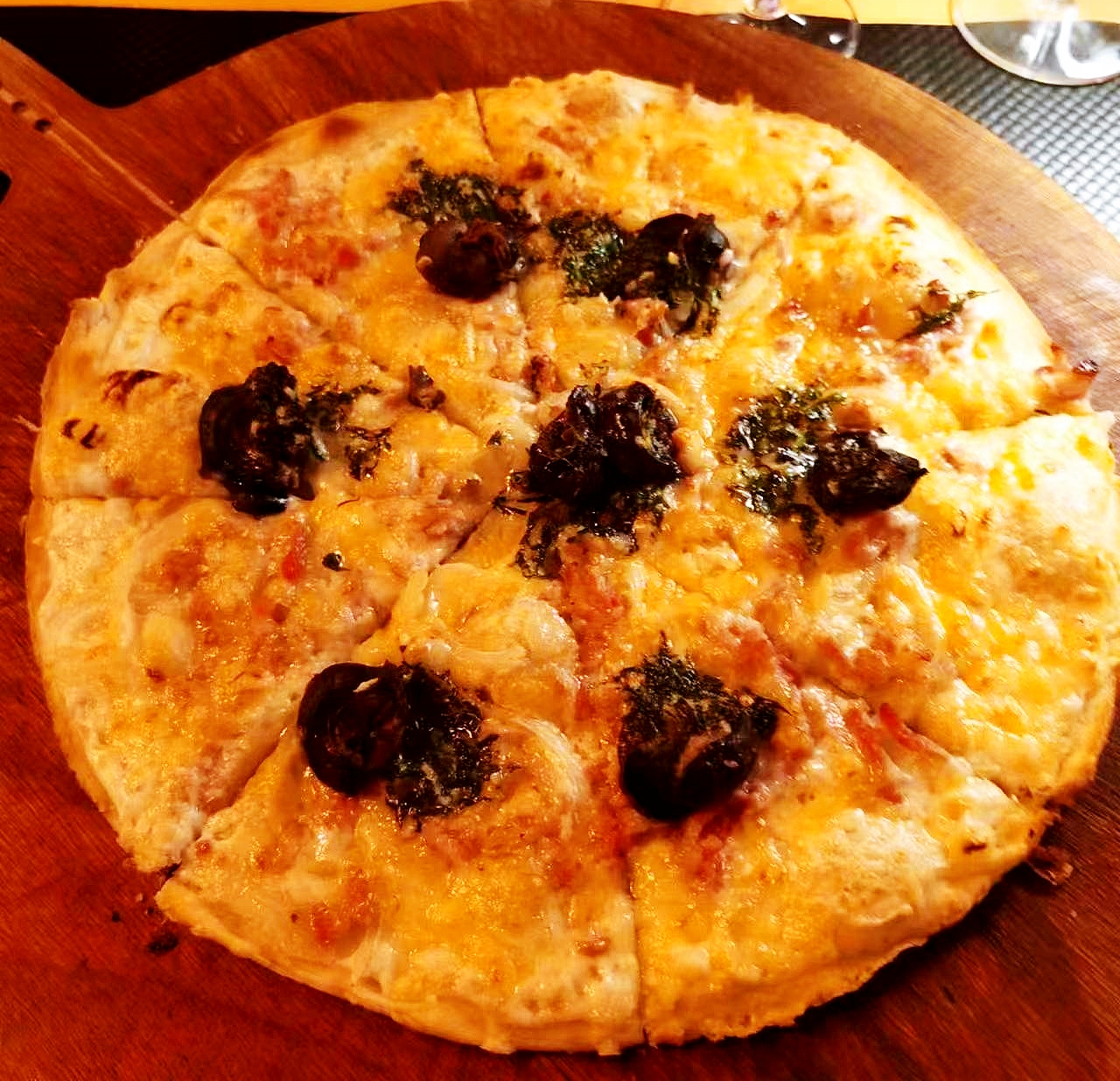
But the Arbalète restaurant boasts other dishes worth trying: its traditional cuisine may be simple but is well-rendered, such as for example the magret de canard with raspberry sauce and the veal kidneys in Pinot Noir sauce. But clearly, it was tarte flambée that my friends and I had dead in our sights, and we didn’t venture far from there. Pizza and snails are two of my favourite things to eat on Earth, so you realize that no Tarte Flambée Escargots can consider itself safe with me anywhere near in the vicinity; so no surprise that it was my choice and I gulped it down in embarrassingly fast fashion. The garlic butter ladled on top of the pie, where a thin but noteworthy layer of emmental cheese is spread out for added flavor (but that I would actually do without if it were me doing the cooking) adds a nice sweet counterpoint to the savouriness of the vineyard’s tasty critters. Really, I could have eaten another whole pie immediately after downing the first one and been none the worse for wear. The classic Tarte Flambée Gratinée was true to type, again with the contrast of salty pork bacon and sweet onions playing off each other sprightly to very good effect: the slightly sour crème freaiche adds a welcome tangy bite to what otherwise might be a little too heavy of flavor profile and texture. Potentially the best dish of the lunch was the Tarte Pomme Cannelle Flambée au Calvados, where the sweet cinnamon apples and the Calvados prove once again that they really are a match made in heaven. My only caveat with this otherwise wonderful dish is that, unlike the other tarte flambées we had that day and tarte flambées in general, it was neither very crispy nor very caramelized: I don’t know if this the specific interpretation of the dish that l’Arbalète believes in, or if someone somewhere just made a mistake, but the tarte seemed curiously undercooked, though I greatly appreciated the freshness and perfume of the apples and the sweetness of the cinnamon.
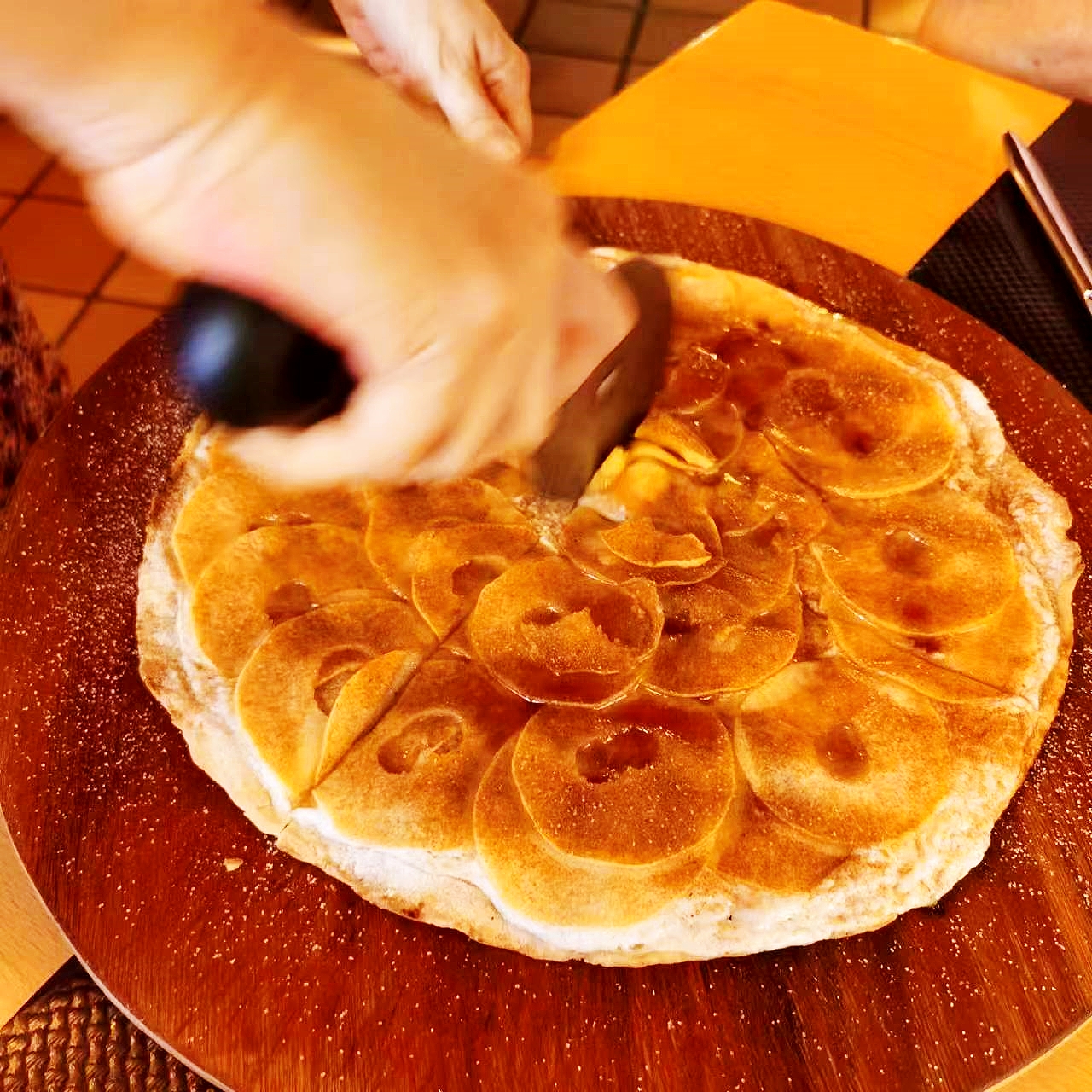
The wines we chose for our lunch were about as classic as possible. Jean Sipp is a solid local producer, and his Jean Sipp 2022 Muscat Réserve Alsace and Jean Sipp 2020 Pinot Gris Alsace were just fine and matched well with the pies (not surprisingly, the former wine was best with the escargot version and the latter wine showed best with the classic gratinée version). Normally, I prefer a good Sylvaner or even an Edelzwicker with my tarte flambées, but on this day these two bottles acquitted themselves well. Both true-to type, neither was the last word in complexity but they provided clean, precise flavours that matched well with our food choices. We finished off our lunch with a couple of glasses each of excellent eaux-de-vie (Vieille Mirabelle and Kirsch, but I also couldn’t resist the Marc de Gewurztraminer) from the local, artisanal, Metté distillery (located in Ribeauvillé’s rue des Tanneurs, it deserves a visit), and then slowly made our way to our scheduled afternoon tasting (at a winery located in the middle of town, such that we knew we did not need to drive anywhere after a lunch of enthusiastic libations.
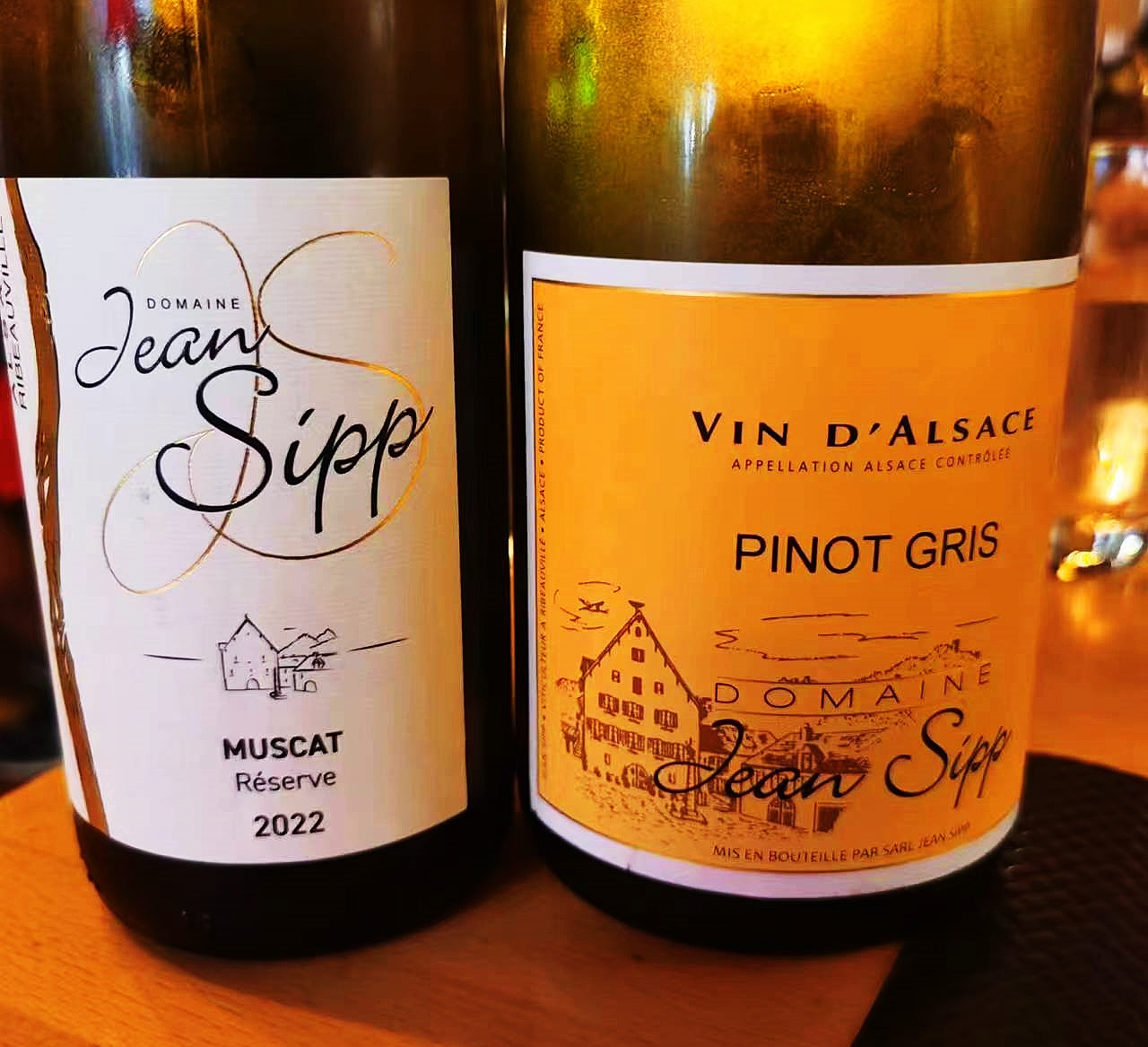
When it was all said and done, we were happy and content with a simple lunch that though not memorable in the epicurean sense of the word, certainly did its job. It served as a fun, relaxing antipasto to the rest of our day spent in one of my favourite wine towns in the world. But then, I love Alsace.
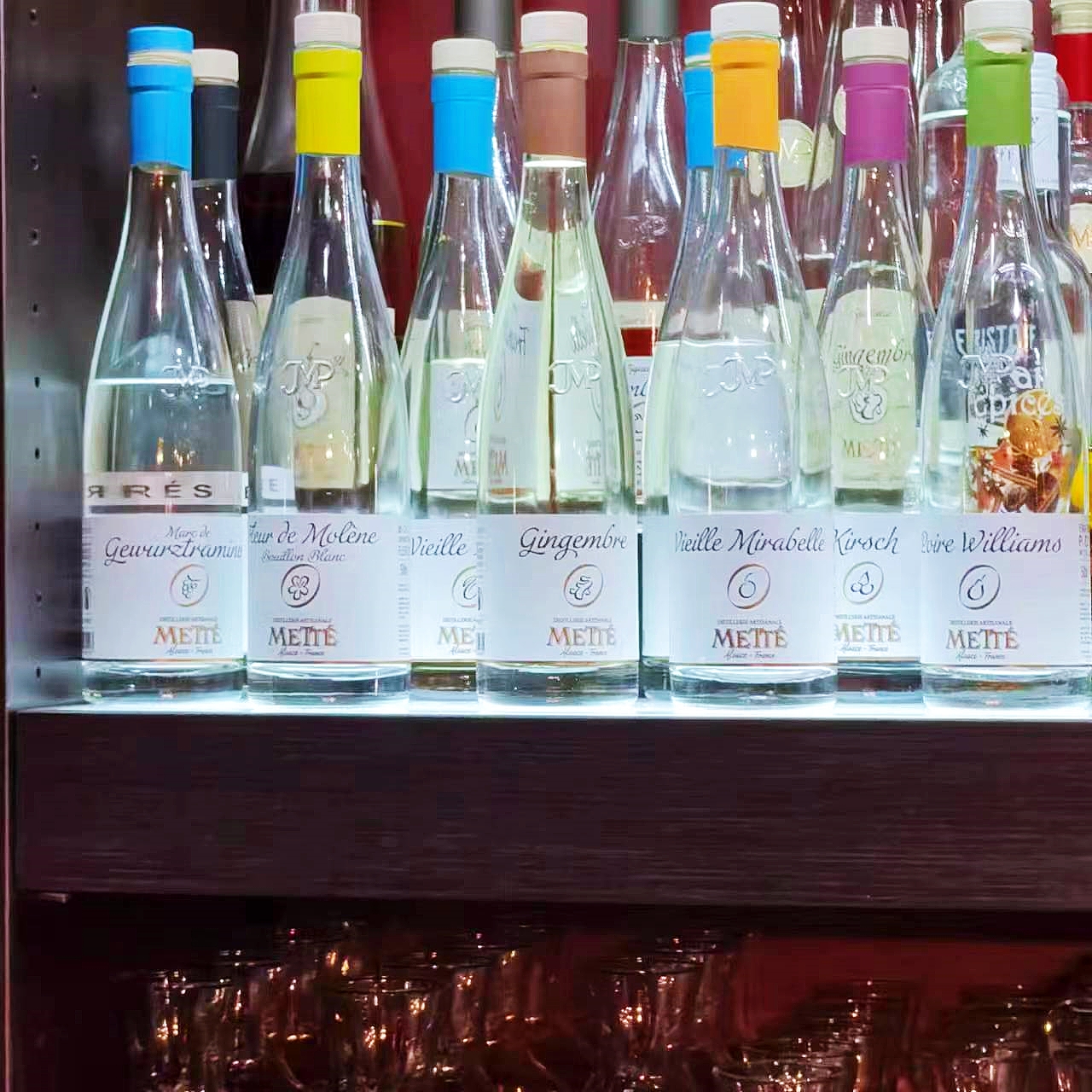

 中文
中文
